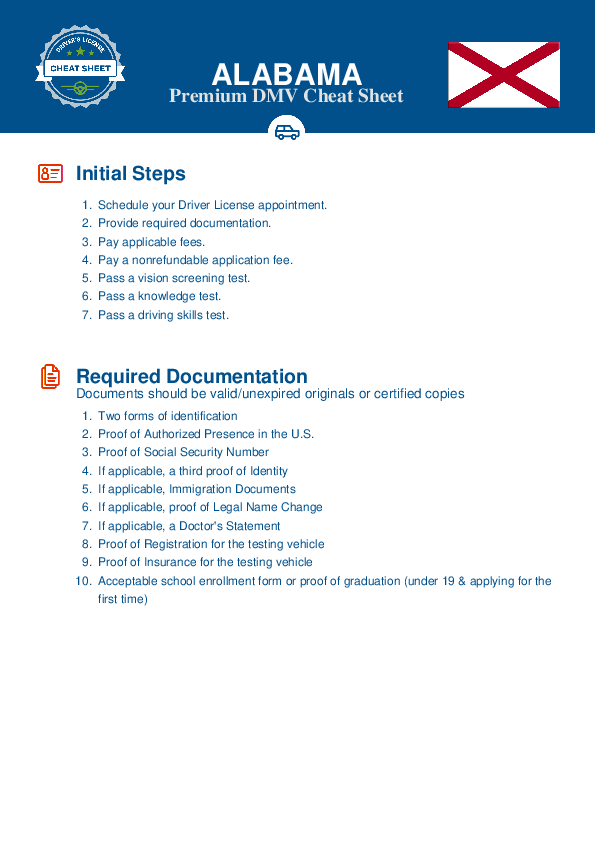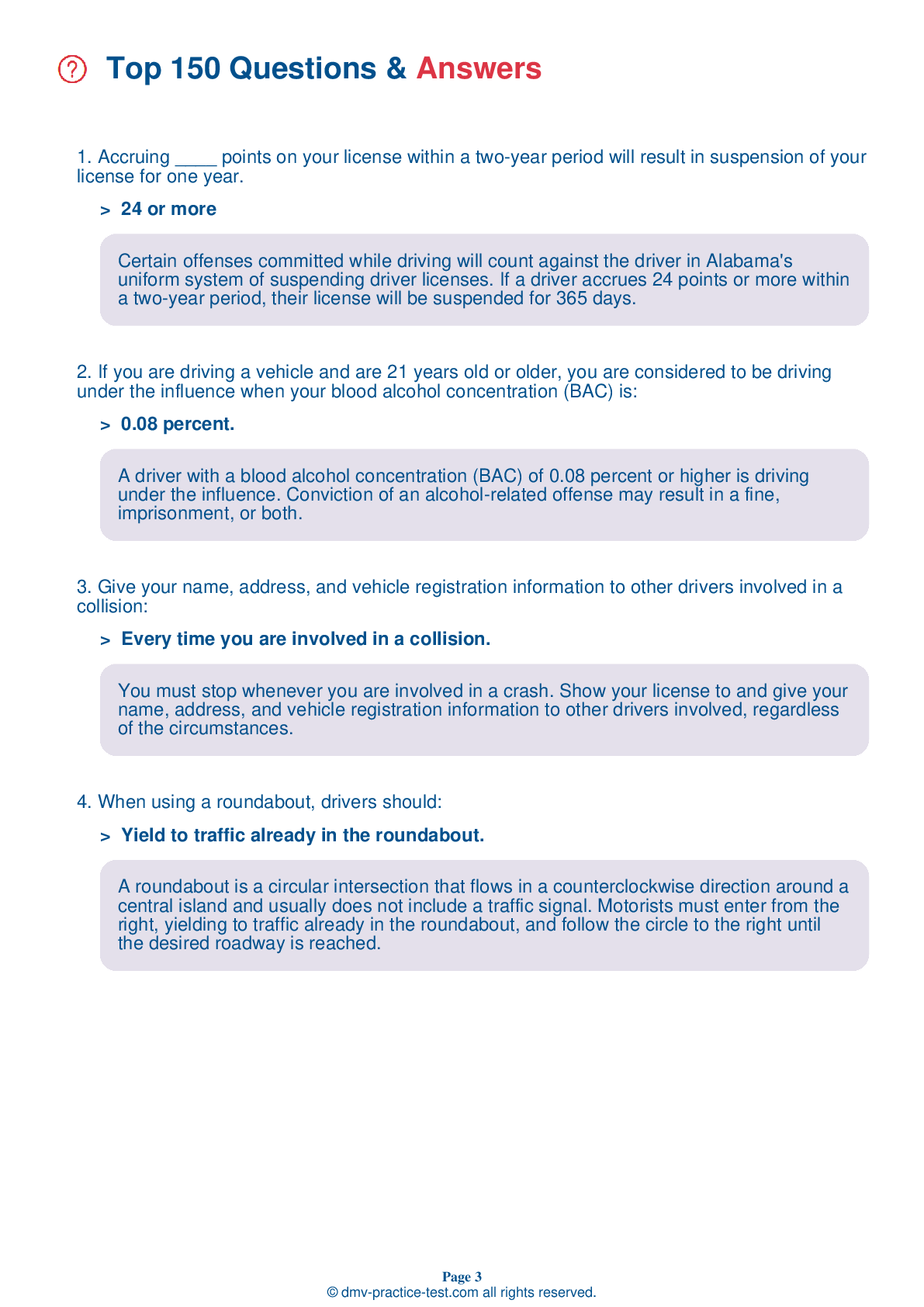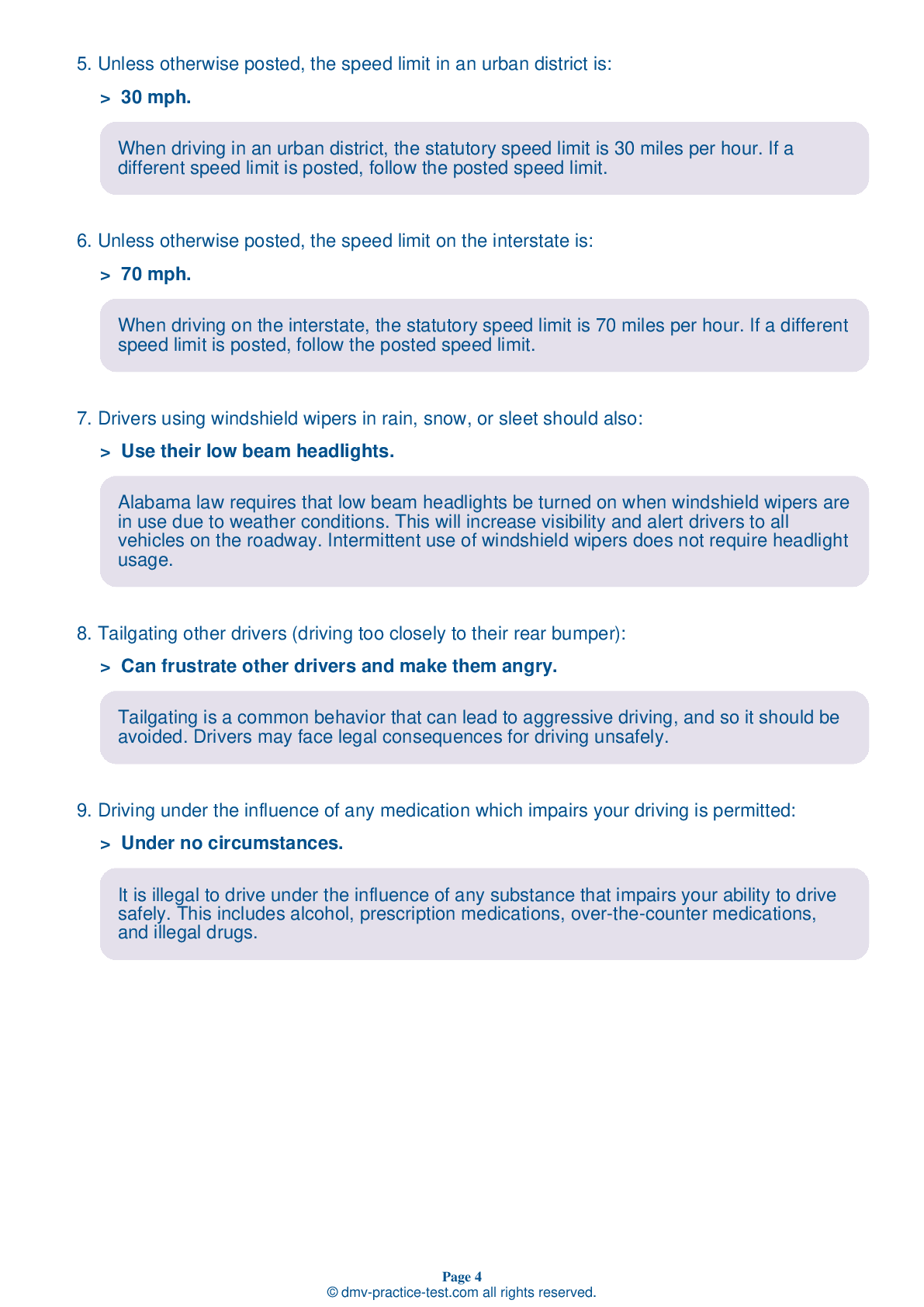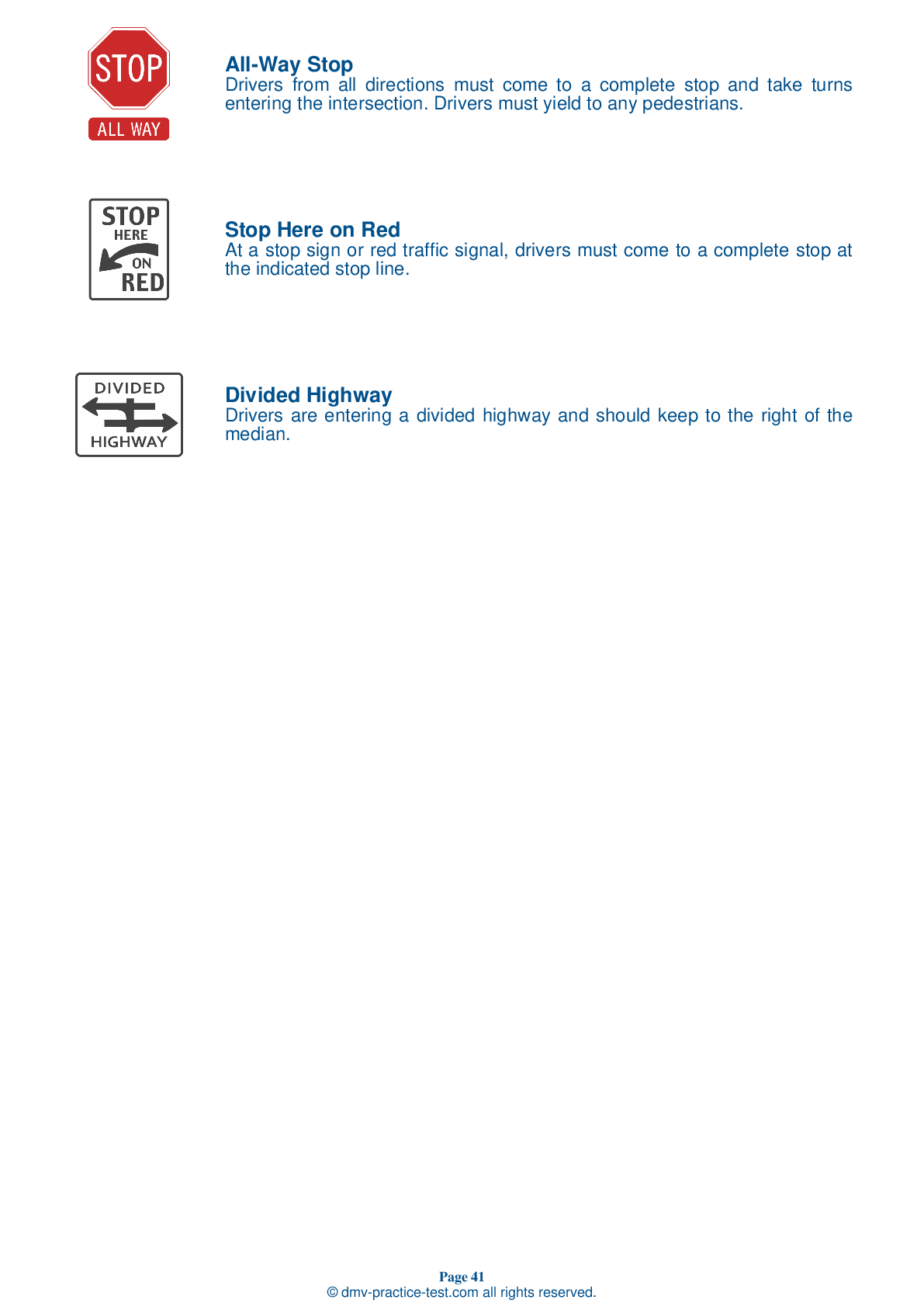FREE Alabama DMV Practice Test #12 Page 3 of 5
This Alabama DMV practise tests for January 2025 was just updated. It includes questions based on the most important traffic signs and restrictions from the official Alabama Driver Handbook for 2025. To prepare for the DMV driving permit test and driver's licence exam, use authentic questions that are very similar (often identical!) to the DMV driving permit test and driver's licence exam.
Each practise test question contains a tip and explanation to help you remember the concepts. Questions about road rules, traffic signs, and driving statutes, as well as information from the Driver Handbook, will be included in the written portion of the official DMV test.
You must properly answer 32 out of 40 questions to receive the required passing score. To help you prepare for your Alabama instruction permit or driver's licence, take our DMV practise exam.
The DMV exam is accessible in a variety of languages.
Using any kind of testing assistance during the test will result in an automatic failure, and the DMV may take additional action against your driver's licence, so don't do it.
17 . You may pass a vehicle when:
A single broken line indicates that drivers may cross from either lane to change lanes. Dashed yellow lines alongside solid yellow lines indicate that passing is permitted from the lane next to the broken line, but not from the lane next to the solid line. Only change lanes when it is safe to do so.
18 . Drivers turning left must yield to:
Drivers making a left turn must yield to all vehicles approaching from the opposite direction. This includes bicycles and motorcycles.
19 . Roads are slippery after it first starts to rain. When the road is slippery, you should:
A wet, slippery road does not allow your tires the traction they need, so it is necessary to drive more slowly on a wet road than you would on a dry road. To reduce the risk of skidding, you should avoid fast turns or stops.
20 . Drivers turning left must yield to:
Drivers turning left must yield to oncoming vehicles that are driving straight ahead. A turning driver may only proceed when they can safely turn without affecting oncoming traffic.
21 . Before you enter an intersection, you should look to your:
Before you enter an intersection, look to both the left and right for approaching vehicles or crossing pedestrians. Look to your left a second time, as vehicle approaching from your left will be closer than those approaching from your right. Look across the intersection before you start to move to make sure the path is clear all the way through.
22 . This sign means:

Signs with a red circle and diagonal line over a black symbol indicate the the action represented by the symbol is prohibited. In this case, the sign indicates that right turns are prohibited.
23 . Construction zone signs are generally:
All temporary signs in work zones have an orange background with black letters or symbols. These signs are found on the right side of the road, or on both the left and right sides if the roadway is a divided highway.
24 . If you are driving and the rear end of your car starts skidding to the left, you should:
If your vehicle enters a skid, you should take your foot off of the brake and steer in the direction that you want to go. For example, if the rear of your vehicle is skidding to the left, you should steer to the left. This will help bring the front of the vehicle in line with the rear, thereby straightening out the vehicle's overall direction.
See the exact questions that will be on the 2025 Alabama DMV exam.
99.2% of people who use the cheat sheet pass the FIRST TIME
LT gives us an insight on how the cheat sheet provided her with all the study questions she needed before taking her test.
Joe initially studied with the handbook and failed his test, he eventually found us online, studied and pass his test the first time around.



